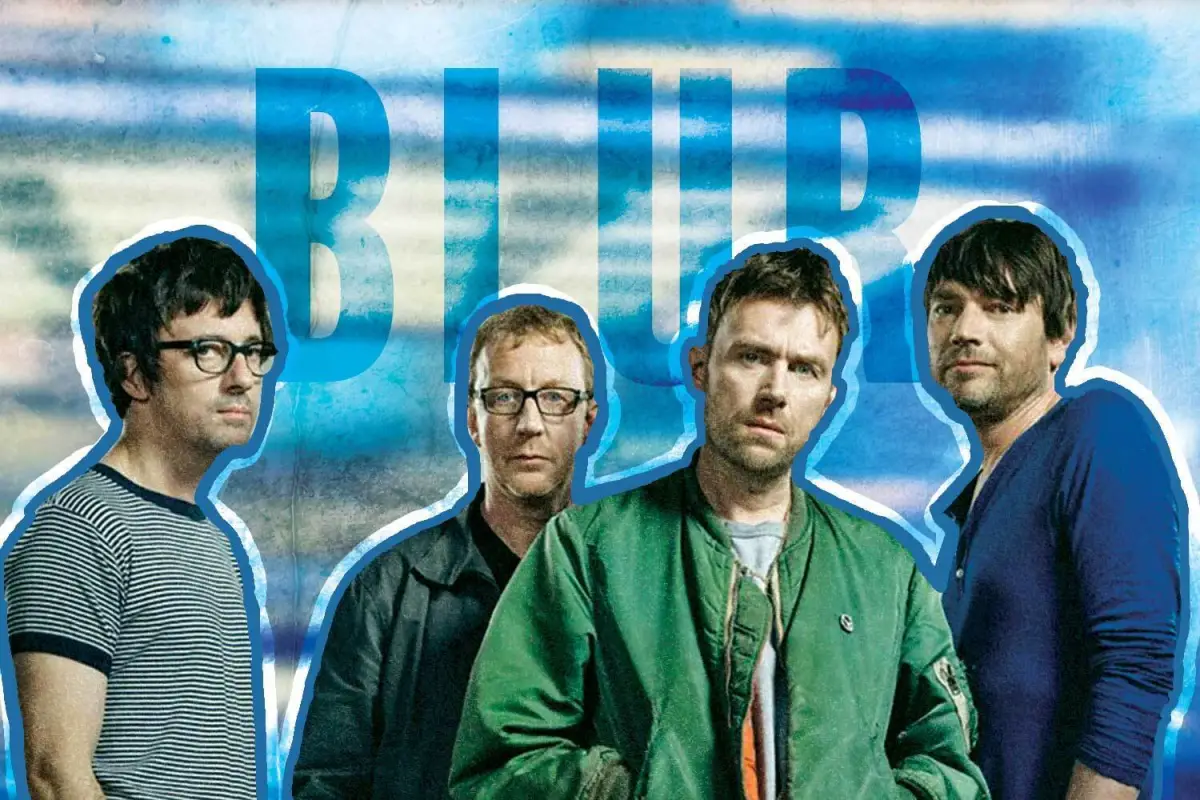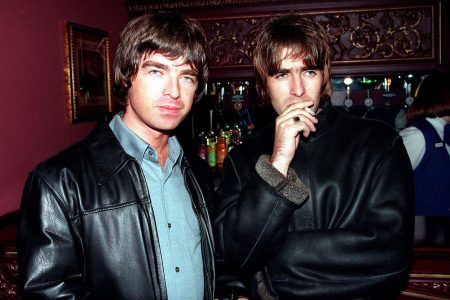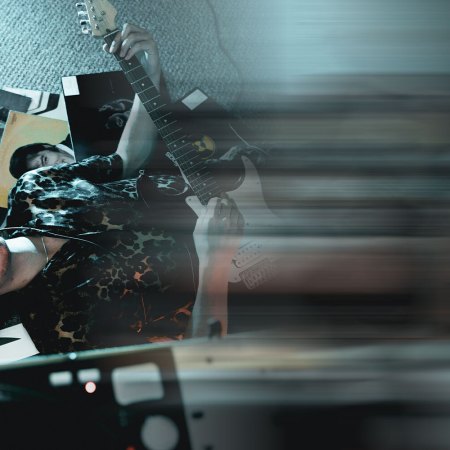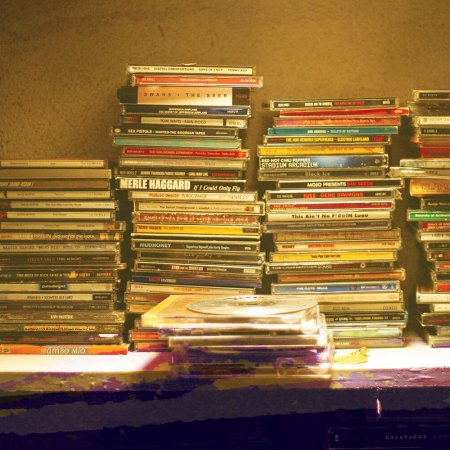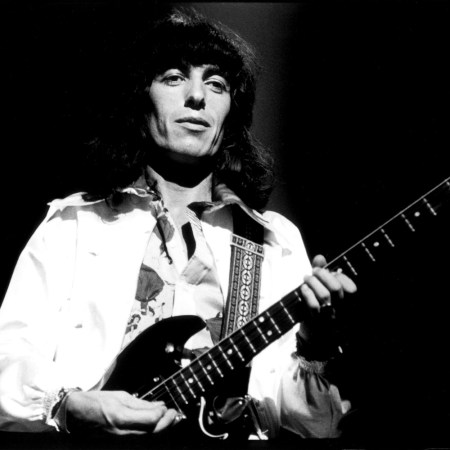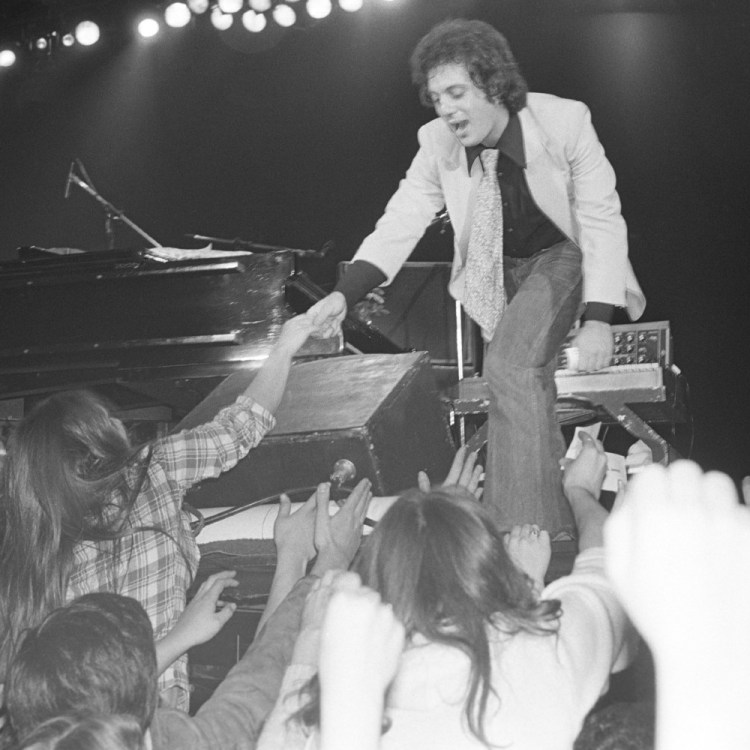A band forever associated with Britpop, Blur evolved well past that short-lived but widely heralded ‘90s-era phenomenon only years after helping to define it. The band formed in the late ‘80s in London and chose a name suggested by their label after it rejected their original name, Seymour. Blur grew out of the burgeoning shoegaze scene with an early set of songs that only showed mere suggestions of the bright melodies and witty character studies that would come to define their music. Their defining work was the “Life Trilogy” of the mid-’90s — Modern Life is Rubbish, Parklife and The Great Escape (the band made several attempts to shoehorn “life” into the name but eventually opted not to force it) — which helped to introduce, perfect and ride the Britpop wave of success, respectively. Their songs reflected both the musical tradition of England, taking influence from the likes of the Kinks and The Jam, while vocalist Damon Albarn’s lyrics drew more directly from British culture.
Blur eventually moved on from that specific cultural moment, pillorying grunge on “Song 2,” exploring their weirdest impulses on 13 and eventually bowing out after 2003’s Think Tank — only to reunite, record another album and then take another extended hiatus. Their ninth album, The Ballad of Darren, arrives after an eight-year pause, but it finds the band with their melodic prowess and ability to tap into a poignant humanity as well calibrated as ever. Guitarist Graham Coxon said in a press release, “The older and madder we get, it becomes more essential that what we play is loaded with the right emotion and intention. Sometimes just a riff doesn’t do the job.”
Our list of the best Blur songs draws from all nine of the band’s albums, singles and deep cuts alike, highlighting the peak of their Britpop era, their internationally known hits and the bolder, artistic moves they’ve taken throughout their career. Though they might not arrive with the frequency that they once did, every new album from Blur is a welcome return.
25. “Country House,” The Great Escape (1995)
This song won the battle of Britpop, outselling Oasis’ “Roll With It” in the UK by a good 60,000 units in summer of 1995. “Country House” is brimming with horns and vocal harmonies inspired by Queen, and the song featured a game-of-life music video directed by famed artist Damien Hirst. Albarn wrote the song’s lyrics in response to former manager and Food Records founder David Balfe, who quit the music business to live in a country estate — though the protagonist in the song, as it turns out, finds no satisfaction in the simpler life: “Blow, blow me out, I am so sad, I don’t know why.” Coincidentally, “Country House” includes what might seem like a passing reference to their Britpop rivals Oasis with the line, “He’s got morning glory and life’s a different story,” though the song was written well before the Gallagher brothers finished (What’s the Story) Morning Glory.
24. “Ambulance,” Think Tank (2003)
As the only Blur album recorded without longtime guitarist Graham Coxon, Think Tank is noticeably absent of one of the band’s defining elements. With leadoff track “Ambulance,” however, the group signaled their prowess at weathering the change instead taking cues from bands like The Clash and Talking Heads, incorporating a dense and slow-burning funk into its syncopated progression. Albarn sweetly sings, “I ain’t got/Nothing to be scared of” against deepening layers of synthesizer, showcasing a haunting and spiritual side of the band they’d seldom shown before.
23. “No Distance Left to Run,” 13 (1999)
Bookended by two singles informed heavily by Damon Albarn’s breakup with Elastica’s Justine Frischmann, 13 is an album that hangs heavy with heartbreak while musically driven by a fractured kind of tension. One of the most immediate and soulful songs on the album, “No Distance Left to Run,” is a beautifully sad standout, beginning with Albarn singing “It’s over/You don’t need to tell me” and stitching some beautiful scar tissue out of a tangible wound.
22. “Barbaric,” The Ballad of Darren (2023)
A brightly bittersweet moment on new album The Ballad of Darren, “Barbaric” is a rich study in contrasts. Crunchy, distorted jabs of guitar echo against a jangle befitting Built to Spill, while a melancholy rumination from Albarn plays the yang to the catchy melody’s yin. “I have lost the feeling I thought I’d never lose/Now where am I going?” he sings in what sounds like a breakup song but might just as easily be speaking to an increasing fracturing in humanity. In other words, modern life continues to be rubbish.
21. “Pyongyang,” The Magic Whip (2015)
Comprising songs the band began writing during an unexpected period of downtime in Hong Kong after a festival cancellation, The Magic Whip is one of the band’s loosest albums. Yet among the more playful material on the record sits the austere “Pyongyang,” capturing a view of the North Korean capital through a lens of icy electronics and Graham Coxon’s rubbery guitar riffs. Its portraits of the “palace of the doomed” and a “red glow, glass coffin” are chilling and melancholy, a haunting and poignant island amid a set of sunnier pop songs.
20. “Song 2,” Blur (1997)
Blur’s biggest stateside hit satirized grunge to greater success than those who actually took it seriously. Through nonsense sad-sack lyrics and an explosive chorus, the group proved their mettle at “feeling heavy metal” while stamping an infectiously goofy “WOO-HOO!” over the top of Coxon’s blown-out, distorted guitars. Inescapable at the time of its release, “Song 2” has aged surprisingly well for a simple reason: even under all the pisstake unseriousness, they still put in the effort to write a great pop melody.
19. “There’s No Other Way,” Leisure (1991)
A product of its time with a few bright glimpses of greatness to come, Blur’s debut album Leisure is peppered with Madchester-in-miniature grooves and proto-Britpop jangle. But amid the mish-mash, “There’s No Other Way” stood apart as a particularly shimmering highlight, driven by Graham Coxon’s groovy guitar riffs, a blanket of whirring psych-rock organ and mesmerizing vocal harmonies. A charming early highlight from a band just on the cusp of realizing their capabilities.
18. “The Narcissist,” The Ballad of Darren (2023)
Blur’s broken up and reunited a few times now, which makes every supposed last tour or last album subject to more scrutiny each time. But the first single from their latest, The Ballad of Darren, proves that their return after eight years is a worthwhile one. Reflecting the perspective of a more grounded and mature band, “The Narcissist” is at once more immediate than anything on The Magic Whip and considerably less experimental than the songs on their two albums before that. It’s simply a great pop song, driven by an electronic pulse, Graham Coxon’s gorgeous guitar jangle and Albarn’s look back on a more self-destructive time in his life: “I could not tear myself away… If you see darkness, look away.”
17. “Popscene,” single (1992)
Touring behind debut album Leisure in the United States, Blur faced disappointing turnout, uninterested audiences and growing tensions within the band that led to actual fistfights. Fed up with America, the group made it their mission to be as British as possible on their second album, Modern Life is Rubbish. “Popscene” preceded the album, a single that indicated a hard stop to their earlier baggy and shoegaze sounds with a buoyant, horn-driven hook and critical jabs that “everyone is a clever clone.” And though Albarn himself follows with “a chrome-covered clone am I,” it’s here where the group truly breaks out as a unique musical force all their own.
16. “You’re So Great,” Blur (1997)
The rare Blur song that features a lead vocal from Graham Coxon, “You’re So Great” is perhaps more accurately a Coxon solo song, crackly, distorted and characterized by his charmingly off-key falsettos. The oft-mentioned Pavement and Dinosaur Jr. influence on the band’s fifth album is most visible here, on a song that strips away Albarn’s more intellectual character studies and social commentary for something earnest and affecting: “I feel the light when you tell me it’s OK/’Cause you’re so great and I love you.”
15. “End of a Century,” Parklife (1994)
It speaks to the quality of the prior singles from Parklife that “End of a Century,” a spectacular song by any measure, is only the third best from that album. A big, dramatic song about settling down and choosing comfort over grand romantic gestures, “End of a Century” wraps ornate Beatlesque melodies around a narrative of domestication and watching risque scenes on TV while maintaining a mundane, routine home life. It’s a warm and measured look at the maturation of a relationship, less a lament than a cozy observation of a fire of passion being pared down to a low-burning flame.
14. “For Tomorrow,” Modern Life is Rubbish (1993)
From the start of Modern Life is Rubbish’s leadoff track “For Tomorrow,” Blur had signaled that they left the Hacienda for good. Arriving only weeks after the release of Suede’s debut album, Modern Life is Rubbish helped to usher in the era of Britpop, and “For Tomorrow” was one of its first great singles, juxtaposing parallel narratives of two young people living lackluster lives in London. But it’s the song’s chorus, a wordless “la-la, la-la-la” confection, that transforms it from a good song to a great single. As Coxon once explained, “Everyone, wherever they are in the world knows what la la la means.”
Liam Gallagher Says Noel Gallagher Has “Done a Lot of Damage” to Oasis
Looks like we might have to wait a bit longer for that rumored reunion13. “Battery in Your Leg,” Think Tank (2003)
The only song on Think Tank to feature guitar from Graham Coxon is, not coincidentally, one of the album’s strongest moments. A tender, open-hearted ballad awash in spacey guitar textures and moments of distorted bombast, “Battery in Your Leg” sounds a lot like Albarn taking one last look at the group before closing the door. Though lines like “This is a ballad for the good times, and all the dignity we had” feel a little less sad, given that the group did ultimately reconvene to make two more albums (so far).
12. “Caramel,” 13 (1999)
Working with William Orbit on sixth album 13, Blur took on more unconventional ideas and seemed to be moving in several different directions at once. Where Graham Coxon’s interest in making a noisier, more punk-inspired album permeates various moments, “Caramel” spotlights Albarn’s growing experimental tendencies, its droning psychedelia an epic showcase of what the band is capable of when leaning away from pop. Much like the album’s emotionally charged singles, “Tender” and “No Distance Left to Run,” “Caramel” is a breakup song, but one that runs through early ‘70s-era Pink Floyd and the weirder edge of contemporary electronica.
11. “Sing,” Leisure (1991)
A standout moment on Leisure five years before being re-released on the hit soundtrack to Trainspotting, “Sing” stood apart from the band’s early baggy grooves and maraca-shaking Madchesterisms. A lengthier dirge heavy on drone and dripping with Velvet Underground and Syd Barrett influence and druggy reflections like “I can’t feel/’cause I am numb,” it offered a suggestion of what Blur was capable of before they established themselves as Britpop icons — and made for a fitting moment of disassociation in a film about chasing a high.
10. “Parklife,” Parklife (1994)
A particularly idiosyncratic single, “Parklife” finds Albarn handing over lead vocal duties to actor Phil Daniels, who offers spoken-word observations of everyday people in a park in England, dripping with regional slang (“John’s got a brewer’s droop, he gets intimidated by the pigeons, they love a bit of it”). Yet Albarn pops up between each line with a yelp of “Parklife!”, like a game of Britpop wack-a-mole. “Parklife” lived a curious second life as a meme in which people would reply in all caps with the song’s title refrain to Russell Brand’s wordy political rants on Twitter. Which is a strange sort of flattery to be sure, but nonetheless confirmation that its place in popular culture is indeed cemented.
9. “Out of Time,” Think Tank (2003)
Though the release of 1993’s Modern Life is Rubbish brought about the most consequential stylistic shift for Blur, the arc of their career is one of consistent evolution. With the release of their seventh album Think Tank, they bore little to no resemblance to the band they once were, taking on a more unconventional approach that included some on-location influence in Morocco, where they recorded the album. Its first single “Out of Time” is a more restrained, slow burning but sweetly melodic song that features an orchestral arrangement from Groupe Regional du Marrakech. It’s Blur at their most gently beautiful.
8. “Beetlebum,” Blur (1997)
Though Blur never leaned too heavy on Beatles homage, at least not to the extent that Oasis did, their most overtly Beatlesque moment (as the title not-so-subtly suggests) is perhaps Britpop’s most satisfying overall. A fittingly fab melody with a sweetly harmonized chorus, “Beetlebum” kicked off their fifth album with a song about wasting the day away with a heroin-addicted partner, progressing into a coda that grows increasingly more chaotic and disorienting a la “A Day in the Life” or “Revolution #9.”
7. “Coffee and TV,” 13 (1999)
Another highlight that finds Coxon taking the lead, “Coffee and TV” was instantly memorable in large part because of its video that followed the adventures of an anthropomorphic milk carton. It’s also one of the few moments on 13, arguably the band’s most experimental album, that has the feel of a classic Blur song, driven by jangly guitar strums and glorious vocal harmonies. Written by Coxon about his own struggles with alcoholism, it’s a song about yearning for a simpler way of living, made more playful through its infectious melody and unexpected eruptions of distortion-soaked guitar.
6. “Death of a Party,” Blur (1997)
In hindsight, the eclectic style shuffling of 1997’s Blur offered plenty of evidence that Albarn would eventually start a project like Gorillaz, teeming with exercises in dub, hip-hop and psychedelia. “Death of a Party” is guided by an eerie organ that recalls that of The Specials’ “Ghost Town” in an otherworldly stylistic departure for the group. Originally dating back to 1993 (a demo version appears on the box set Blur 21), the song finally took shape four years later, showcasing the group at their weirdest and most inventive, as Albarn sings with the dispassionate defeat of a shell of a man.
5. “Chemical World,” Modern Life is Rubbish (1993)
Though Modern Life is Rubbish was Blur’s attempt to make the most British album they possibly could, Albarn’s songwriting more closely hones in on the lives of everyday people — character studies that reveal something more intimate than the grander concept might suggest. With “Chemical World,” Albarn hones in on people whiling away the doldrums of everyday living with sugar and caffeine. Yet Coxon’s guitar work drives the song, with spindly, fuzzed-out leads that split the difference between Marc Bolan and Johnny Marr.
4. “Girls and Boys,” Parklife (1994)
A campy foray into Duran Duran-flavored disco probably wasn’t what anyone expected after the conceptual jangle of 1993’s Modern Life is Rubbish, but Blur made a habit of shuffling the deck early and often. The leadoff track from Parklife finds the group bolstering their infectious pop with dancefloor-ready drum machine beats and cheeky lyrics about young people’s anonymous, promiscuous exploits on holiday. And with its infectious earworm chorus, the group found their way back on the charts after disappointing sales from their prior album, with “Girls and Boys” being named song of the year from both NME and Melody Maker.
3. “Tender,” 13 (1999)
The maximalist counterpart to “No Distance Left to Run,” “Tender” turns the idea of a breakup song on its head, reveling in an uplifting gospel melody — backed by the London Community Gospel Choir — while continuing a long, slow build during the course of its seven-plus minutes. Rather than wallowing in despair, Albarn declares that “love’s the greatest thing that we have” while offering the affirmation, “I’m waiting for that feeling again.” There’s a restorative quality to the song that bassist Alex James experienced firsthand, as he entered the studio while they were working on the album “feeling like shit” (in his words) and immediately having his mood turned around after hearing the song.
2. “This is a Low,” Parklife (1994)
The era of Britpop peaked with this most English of songs: a ballad about the Shipping Forecast, a BBC radio broadcast that’s influenced art and poetry, as well as a long list of songs from the likes of Radiohead and Wire. Though it doesn’t carry the pathos of some of their more personal later highlights, Albarn imbues lines like “On the Tyne, Forth and Cromarty/There’s a low in the high Forties” with a certain wistful melancholy, while its arrangement is among the band’s most heroically climactic, revisiting the shoegaze and psychedelia roots of their debut album and finally reaching their full potential.
1. “The Universal,” The Great Escape (1995)
Blur’s single greatest song is also one of their most slyly dark, juxtaposing imagery of surveillance and hints of dystopia with an overarching sense of defeat. In keeping with The Great Escape’s themes of disillusionment and isolation, “The Universal” slips in lines like “No one here is alone” between its grand string crescendoes and bittersweet Burt Bacharach-style trumpet. Of course, there’s a paradoxical irony to that statement — no one is alone because, in essence, everyone is alone. And when Albarn sings “It really, really, really could happen” in response to the idea that “tomorrow is your lucky day,” that could is doing a lot of heavy lifting — because we know it probably won’t be. No Blur song has ever been so gorgeous, or so devastating.
This article appeared in an InsideHook newsletter. Sign up for free to get more on travel, wellness, style, drinking, and culture.
